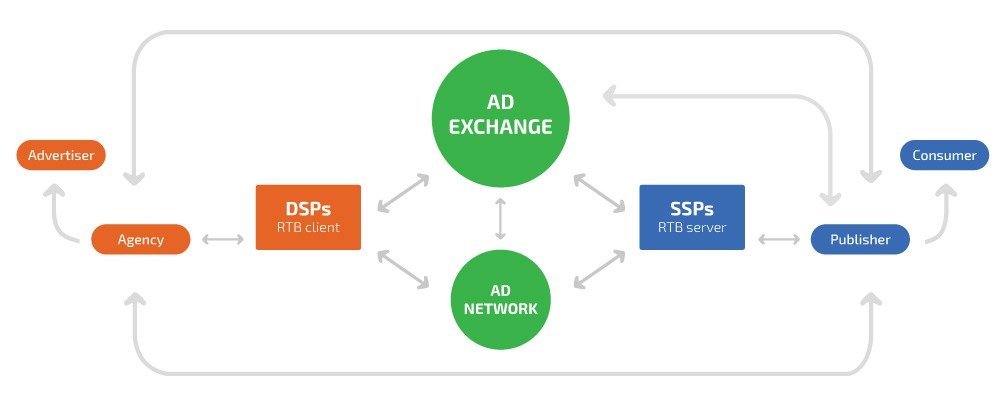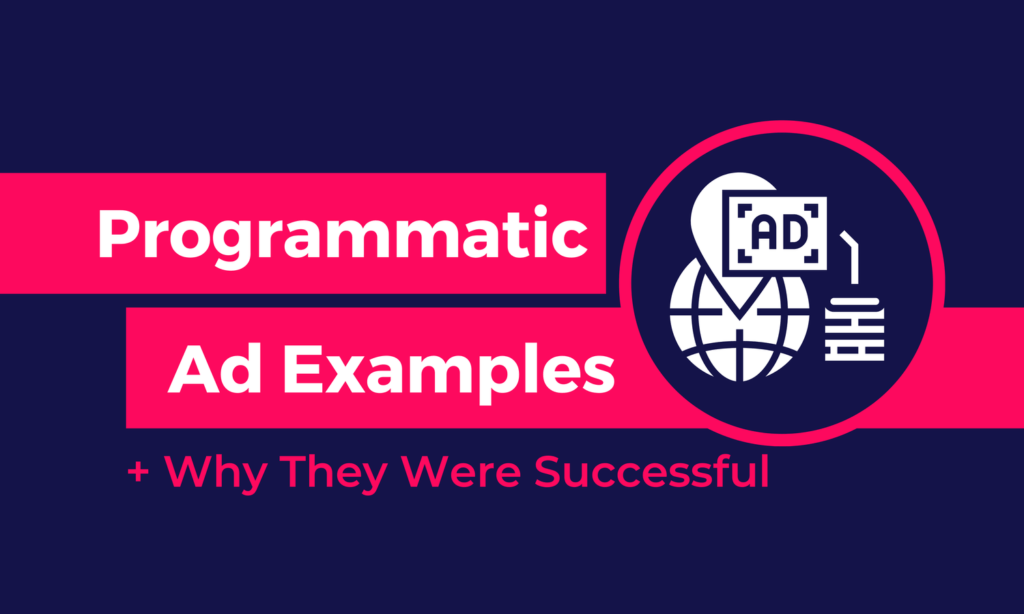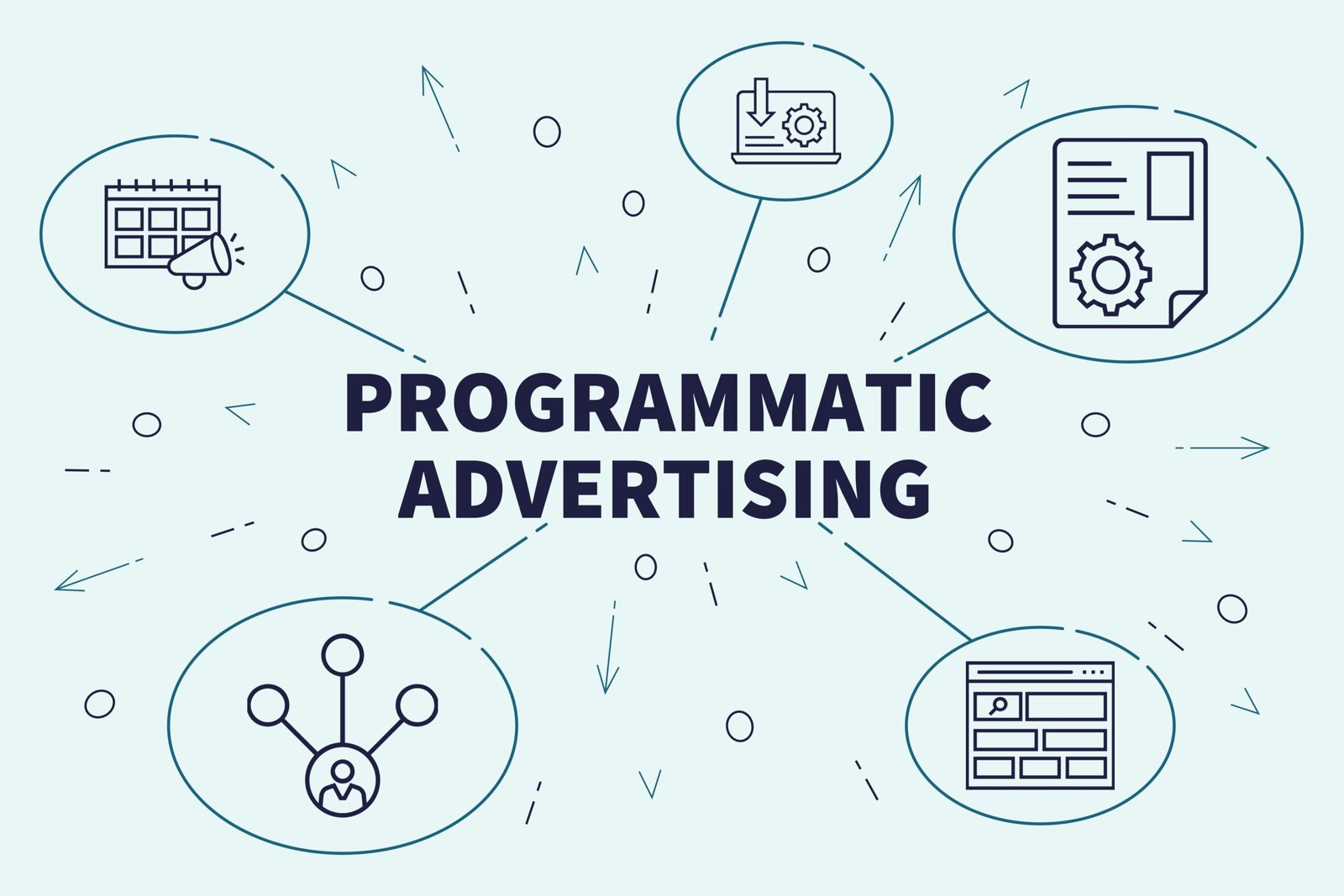What will you learn here
Programmatic advertising represents a revolutionary approach to buying and selling ad space in real-time auctions, powered by sophisticated algorithms and data-driven decision-making. Unlike traditional methods, programmatic advertising enables precise targeting, efficient campaign management, and unparalleled scalability, ushering in a new era of digital marketing effectiveness.
Throughout this guide, we’ll delve into the fundamentals of programmatic advertising, from understanding the key players and technologies involved to navigating the intricacies of ad exchanges, demand-side platforms (DSPs), and supply-side platforms (SSPs). We’ll also unravel the complexities of audience segmentation, ad formats, and optimization strategies essential for maximizing campaign performance and ROI.
Whether you’re a marketing novice or a seasoned professional, this guide will equip you with the knowledge and insights needed to harness the full potential of programmatic advertising, driving superior results and staying ahead in today’s competitive digital ecosystem. Let’s embark on this enlightening journey together and unlock the power of programmatic advertising!
What Is programmatic Advertising ?

Programmatic advertising is a data-driven approach to buying and selling digital advertising space in real time. It utilizes automated systems and algorithms to streamline the process of ad placement and optimize campaign targeting and performance. Unlike traditional ad buying methods, which often involve manual negotiations and ad placements, programmatic advertising relies on technology platforms to make instantaneous decisions about where to display ads based on various parameters.
Key components of programmatic advertising include:
- Ad Exchanges: These platforms act as marketplaces where publishers (those who sell ad space) and advertisers (those who buy ad space) come together to transact in real time.
- Demand-Side Platforms (DSPs): These are tools used by advertisers and agencies to manage and optimize their ad campaigns. DSPs allow advertisers to specify their targeting criteria and bidding strategies.
- Supply-Side Platforms (SSPs): Publishers use SSPs to manage and optimize the sale of their ad inventory. SSPs connect publishers to multiple ad exchanges and help them maximize their ad revenue.
- Data Management Platforms (DMPs): DMPs are used to collect, analyze, and leverage data about audiences for targeting purposes. They enable advertisers to reach specific demographics or target audiences with personalized messages.
Programmatic advertising offers several benefits, including increased efficiency, better targeting capabilities, real-time optimization, and greater transparency in ad transactions. It has become an integral part of digital advertising strategies due to its ability to deliver relevant ads to the right audience at the right time, ultimately driving better results for advertisers and publishers alike.
What are programmatic advertising platforms ?

Programmatic advertising platforms encompass a variety of tools and systems that facilitate the buying and selling of digital advertising inventory in an automated and data-driven manner. These platforms cater to different stakeholders in the advertising ecosystem, including advertisers, publishers, ad networks, and agencies. Here are some key types of programmatic advertising platforms:
Demand-Side Platforms (DSPs)
- DSPs are used by advertisers and agencies to purchase ad inventory across multiple ad exchanges and publishers.
- They offer features for campaign management, audience targeting, real-time bidding (RTB), and performance optimization.
- Popular DSPs include Google Display & Video 360, The Trade Desk, MediaMath, and Adobe Advertising Cloud.
Supply-Side Platforms (SSPs)
- SSPs are utilized by publishers to manage and optimize the sale of their advertising inventory.
- They connect publishers with multiple ad exchanges and demand sources to maximize revenue.
- SSPs often provide tools for inventory management, yield optimization, and ad quality control.
- Examples of SSPs include OpenX, PubMatic, Rubicon Project, and AppNexus.
Ad Exchanges
- Ad exchanges serve as digital marketplaces where publishers can sell their ad inventory to advertisers in real time.
- They facilitate the auction-based buying and selling of ad impressions across a wide range of websites and apps.
- Some prominent ad exchanges include Google AdX (Ad Exchange), OpenX Exchange, and AppNexus Marketplace.
Data Management Platforms (DMPs)
- DMPs collect, analyze, and activate audience data for targeted advertising campaigns.
- They help advertisers and publishers leverage first-party and third-party data to enhance audience segmentation and targeting.
- Examples of DMPs include Salesforce DMP (formerly Krux), Adobe Audience Manager, and Oracle BlueKai.
Ad Networks
- Ad networks aggregate ad inventory from multiple publishers and offer it to advertisers through programmatic buying.
- They typically focus on specific niches or verticals and may offer additional services such as ad creative optimization.
- Examples of ad networks include AdRoll, Conversant, and Criteo.
These programmatic advertising platforms form the backbone of the automated, data-driven advertising ecosystem, enabling efficient and targeted ad campaigns across various digital channels.
Why is Programmatic Advertising Successful?

Programmatic advertising has become immensely successful due to several key factors:
- Efficiency: Programmatic advertising automates the process of buying and selling ad inventory, eliminating the need for manual negotiations and paperwork. This efficiency leads to cost savings and allows advertisers to allocate resources more strategically.
- Targeting Precision: Programmatic platforms leverage vast amounts of data to target ads to specific audiences based on demographics, interests, browsing behavior, and other parameters. This precise targeting increases the relevance of ads, improving the likelihood of engagement and conversion.
- Real-Time Optimization: Programmatic advertising enables real-time adjustments to ad campaigns based on performance data. Advertisers can optimize bidding strategies, creative elements, and targeting criteria on the fly to maximize campaign effectiveness and ROI.
- Scale and Reach: Programmatic advertising provides access to a vast ecosystem of ad inventory across numerous websites, apps, and digital platforms. This extensive reach allows advertisers to connect with their target audience across multiple touchpoints and devices, enhancing brand visibility and awareness.
- Transparency and Control: Programmatic platforms offer advertisers greater transparency into their ad placements, costs, and performance metrics. Advertisers have visibility into where their ads are displayed and can monitor campaign performance in real time, empowering them to make informed decisions and optimize campaigns effectively.
- Dynamic Ad Formats: Programmatic technology supports a wide range of ad formats, including display, video, native, and mobile ads. This versatility enables advertisers to deliver engaging and immersive ad experiences tailored to different audience preferences and digital environments.
- Data-Driven Insights: Programmatic advertising generates valuable data insights that advertisers can use to refine their targeting strategies, improve audience segmentation, and enhance overall marketing effectiveness. By analyzing performance metrics and audience behavior, advertisers can continuously optimize their campaigns for better results.
Overall, the combination of efficiency, precision targeting, real-time optimization, and transparency has propelled programmatic advertising to success, making it a cornerstone of modern digital marketing strategies.
Programmatic Advertising Examples

Programmatic advertising is prevalent across various digital channels, including display, video, mobile, and social media. Here are some examples of how programmatic advertising is used in practice:
- Display Advertising: Programmatic display ads appear on websites and mobile apps, targeting users based on their browsing behavior, demographics, and interests. For example, if a user frequently visits sports websites, they may see programmatic ads for sports equipment or apparel while browsing other sites.
- Video Advertising: Programmatic video ads are commonly displayed on platforms like YouTube and social media channels. Advertisers can target specific audiences based on their viewing habits, demographics, and interests. For instance, a cosmetics brand might use programmatic advertising to reach beauty enthusiasts with pre-roll video ads on YouTube.
- Mobile Advertising: Programmatic advertising is prevalent in mobile apps, where ads can be dynamically served based on user behavior and location. For example, a food delivery app might use programmatic ads to promote local restaurant offers to users in specific geographic areas.
- Social Media Advertising: Platforms like Facebook, Instagram, Twitter, and LinkedIn offer programmatic advertising solutions that allow advertisers to target users based on their interests, behaviors, and demographics. Advertisers can create highly targeted ad campaigns to reach specific audience segments. For instance, an e-commerce brand might use programmatic advertising on Facebook to target users who have shown interest in similar products.
- Native Advertising: Programmatic native ads seamlessly blend into the content of websites and apps, matching the look and feel of the surrounding content. Advertisers can use programmatic native advertising to deliver highly relevant and engaging ads to users. For example, a travel brand might use programmatic native ads to promote vacation packages within travel-related articles on a website.
These examples illustrate the diverse applications of programmatic advertising across different digital channels, enabling advertisers to reach their target audiences effectively and efficiently.
Conclusion
Programmatic advertising represents a paradigm shift in the digital advertising landscape, revolutionizing the way ads are bought, sold, and delivered online. With its data-driven approach and automated processes, programmatic advertising offers unparalleled efficiency, precision targeting, and real-time optimization capabilities. By leveraging sophisticated algorithms and vast amounts of data, advertisers can reach their target audiences with unprecedented accuracy, while publishers can maximize their ad revenue by selling inventory more effectively.
Furthermore, programmatic advertising fosters greater transparency and accountability in ad transactions, empowering advertisers to track and analyze campaign performance in real time. This level of transparency not only enhances trust between advertisers and publishers but also enables continuous improvement through data-driven insights and optimization strategies.
As the digital ecosystem continues to evolve, programmatic advertising will remain at the forefront of innovation, driving forward the effectiveness and efficiency of online advertising campaigns. Embracing the principles and practices of programmatic advertising is essential for staying competitive in today’s dynamic marketplace, where reaching the right audience with the right message at the right time is paramount to success. By understanding and harnessing the power of programmatic advertising, businesses can unlock new opportunities for growth and achieve their marketing objectives with precision and impact.



Leave a Reply